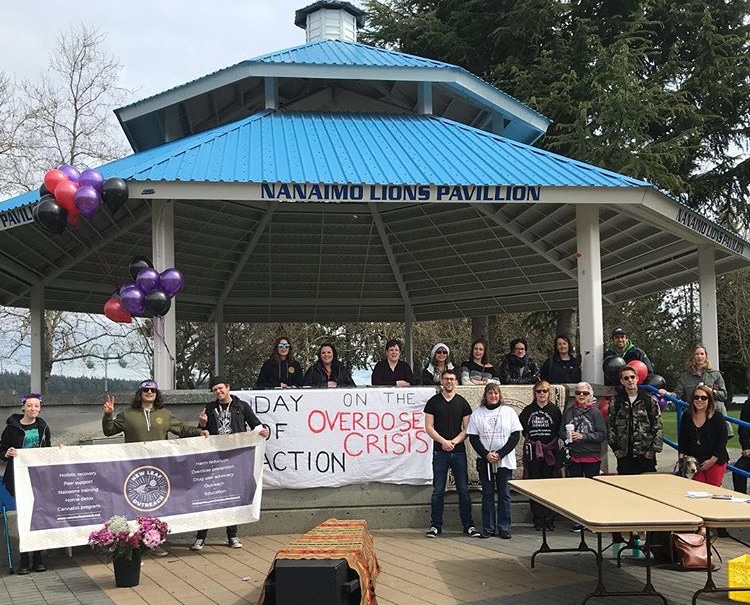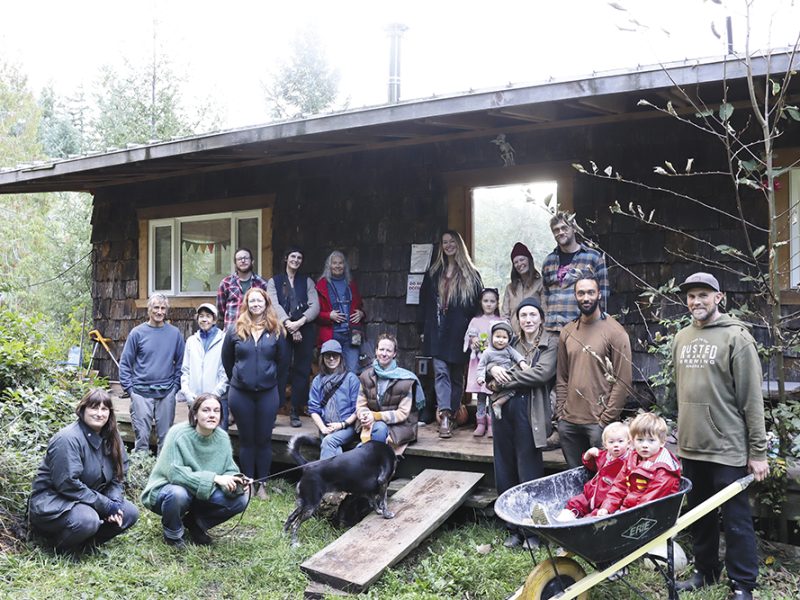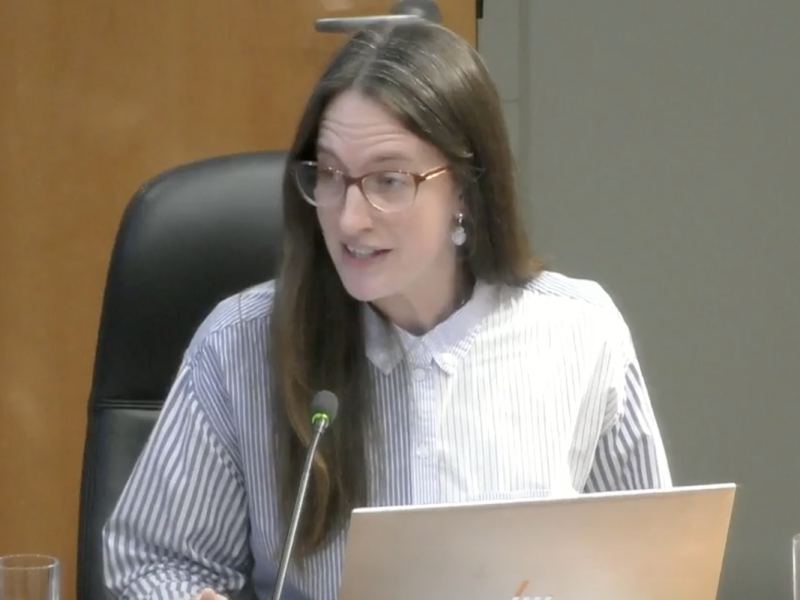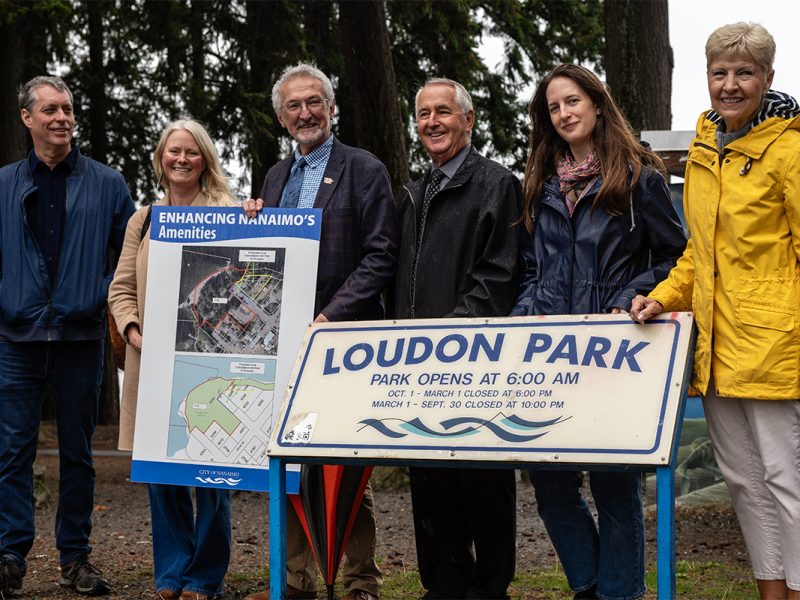
Working as an emergency department nurse throughout the summer of 2018, there was rarely a shift that passed without an interaction with a patient whose identification noted the address of “Discontent City” — many of whom had been brought in by ambulance after non-fatal overdose as a result of a toxic supply of drugs.
I can clearly recall one shift where I cared for a 36-year-old man who was new to Nanaimo with no fixed address, thankfully surrounded by peers who knew how to respond with naloxone and save his life.
I spent a couple of hours with him talking, getting him something to eat, cleaning up his feet, and trying to find him a warm place to stay that night, but ultimately I had to discharge him back to the street.
That evening, I came home from work, made dinner and got ready for bed. But when I looked out my window overlooking an inset in the back wall of the church across the street from me, I saw my patient lying there — asleep, still wearing the hospital pants I sent him off with, and not a whole lot else.
I didn’t know what to do. I was paralyzed by my own fear and the shackles of professional boundaries. So I ended up spending the whole night watching him, just making sure he was breathing on his own. The next morning he had moved on, and despite always keeping an eye out for him, I never saw him again.
I left my job in the ER later that fall with what I considered to be “burnout,” but ended up being diagnosed as severe post-traumatic stress disorder (PTSD), a condition that some researchers estimate impacts up to 20 per cent of health care workers.
I share that as an important part of my story because, as a result of my own mental health experiences, I am also someone who identifies as a person who uses substances — specifically cannabis and psychedelics — and I can tell you with complete certainty that if it weren’t for these illicit medicines and the healing they have provided me, I would not be here with the capacity to practice as a nurse once again.
For the past few years, I have had the opportunity to learn from and volunteer with peers in our community as a member of the Nanaimo Community Action Team, a team of peers and professionals working together to increase compassion and bring an end to death and harm caused by the drug poisoning crisis in our community.
Why are people who use drugs dying?
The drug poisoning crisis in Nanaimo meets at the intersection of a housing affordability crisis that has left approximately 6,000 people living on the brink of homelessness and 1,795 people experiencing homelessness every year, according to estimates from the City of Nanaimo.
Shelter is a basic human need, and without a safe roof and a warm bed, people cannot be expected to heal. While substance use and homelessness are not synonymous, under-housing and financial insecurity trap people within an unending cycle of survival, with many under-housed folks coping at the complex intersection of trauma, mental health and substance use.
When we add a toxic supply of drugs and increasing rates of hypoxic brain injury — often irreversible physiological brain damage as a result of lack of oxygen after overdose —the results are what we see on our streets today.
Substance use plays upon our brain’s chemical reward system, while maladaptive substance use takes place when our brains and nervous systems become rewired to operate in ways that demand more and more to achieve the same reward.
When we roll back the stigma to see substance use in relationship to our physical bodies, we can understand that to use substances is to be human. From coffee or alcohol to cannabis, plant medicines and heroin, substance use transcends race, labels, identities, sexualities, levels of income, education and privilege.
To learn about the nature of substance use allows us to grow our own compassion and put aside any previous beliefs about “addiction,” understanding that what lies below the surface of substance use is a complex adaptation to experiences rooted in trauma, colonization and systemic oppression.
When we talk about a “drug poisoning crisis” in lieu of the term “overdose crisis,” it is because the substances being consumed by people today are no longer predictable in their content or potency, adulterated with other substances of unknown amounts. It is now the level of toxicity of the substance, not the amount consumed, that is killing people.
Fentanyl and carfentanil are chemical opioids 10 to 100 times stronger than heroin and other opioids like morphine or hydromorphone used for clinical pain management. Post-mortem toxicology results from the BC Coroner Service show that there have been a greater number of cases of fatal overdose with extreme concentrations of these chemicals over the last year compared to those previous.
These changes to the supply of drugs come as a result of increased and altered demand for more potent opioids, as well as failed drug policies.
The detection rate of benzodiazepines found in illicit substances has rapidly increased from 15 per cent of samples in July 2020 to 52 per cent of samples in January 2022.
Benzodiazepines are central nervous system depressants that do not respond to naloxone, creating challenges for community members and first responders. Toxicology results show no indication that prescribed safe supply is contributing to illicit drug deaths and absolutely no deaths have been reported at safe consumption sites.

Who is impacted by Nanaimo’s drug poisoning crisis?
According to the most recent coroners report, 333 people have died of illicit drug toxicity in Nanaimo since 2012. We have lost more than 80 community members in the last 20 months alone, equating to approximately one person dying per week.
The vast majority of people dying are middle-aged men (nearly 80 per cent), although all ages and populations are impacted. First Nations people make up 3.3 per cent of the population in B.C. but account for nearly 16 per cent of all overdose deaths recorded. First Nations women are disproportionately impacted.
Illicit drug toxicity has become the leading cause of unnatural death in the province, accounting for more deaths than homicides, suicides, motor vehicle incidents, drownings, and fire-related deaths combined.
These complex issues have reverberating impacts on the wider community. Many people refuse to go downtown and take their kids to parks because they aren’t sure what they will be exposed to. Local businesses and tourism sectors grapple with break-ins and property damage, as well as exposure to trauma and violence at work on a daily basis.
We can already begin to foresee generations of children without fathers, siblings and safe homes — the product of intergenerational experiences with trauma and substance use.
We now have cohorts of adults dependent on full-time care for complex health issues and brain injury, feeling a rise in collective grief as more and more people are impacted by fatal overdose. Ultimately we are in the midst of a collective trauma that will last in our cells for generations to come.
What are the barriers to addressing this crisis?
There are not enough or adequate services for people who use drugs in Nanaimo. Despite evidence-based practice and demands by people who use drugs in this community since before 2018, there is still no sanctioned space in Nanaimo for the safe inhalation of substances, as the current Overdose Prevention Site on Wesley Street does not allow it.
People who use substances often experience a multitude of physical and mental health concerns like any other human, which may or may not include pharmaceutical medical management. And despite any intention to use only single substances, the mixed-bag nature of illicit street drugs has any person who uses them exposed to multiple substances with varying life-threatening effects.
The community of Nanaimo is poisoned with stigma — from our systems to ourselves. The hate and stigma is visible on social media, in access to services and spaces, in endless fencing, in people ranting at coffee shops and in the vigilante violence experienced by people in our community.
As a society, we have decided that the only way to keep people safe is to militarize communities with policing, as evidenced by Vancouver Police street sweeps and the removal of encampments.
But when we publicly fund enforcement systems that penalize people for sleeping in their cars, bringing grocery carts into a public park or carrying belongings when they have nowhere else to go — we need to reexamine our priorities.
And when the people who are elected or selected to serve this community decide issues like housing are the responsibility of the provincial or federal government, they are refusing to protect the people who live here.

What are local people doing in response?
Nanaimo is a resilient community rooted in compassion. I have been witness to heroes in my work with peers: people who have saved hundreds and hundreds of lives, people who are relentless in their advocacy for those they love and activists who, despite all the violence and hate thrown against them, persist in this work today.
A dedicated group of peers – drug users who support one another to be safe — and peer-run groups have always been first on the frontline operating outreach and safe consumption services on the street since the presence of Discontent City.
The Community Action Team (CAT) against the Overdose Crisis is a project initially developed by local public health advocates Dr. Paul Hasselback (former Island Health chief medical officer for central Vancouver Island) and his then-graduate student Griffin Russell in 2015, adopted as a provincial response to rising overdose numbers. Teams now exist in communities across B.C.
The Nanaimo CAT is a network comprised of over one hundred professionals and peers that works to elevate the incredible capacity drug users have to organize and care for one another.
For more than four years, with minimal funding provided by the BC Overdose Emergency Response Centre, the Nanaimo CAT has provided annual grants in support of local outreach, including Nanaimo and Area Network of Drug Users (NANDU), to operate its peer-run safe consumption outreach model.
Our local CAT community has helped initiate trauma and violence-informed practice education in Island Health emergency departments.
Our peer members have helped deliver more accessible health services in the form of the Primary Care Outreach Van, a project bringing doctors, nurses, social workers, and peer support into the areas of our community where people require care. More and more, we see peers being included and supported in research and roles across Nanaimo.

What can we do about Nanaimo’s drug poisoning crisis?
In March of this year, the BC Coroner Service convened a Death Review Panel to assess and make recommendations to the province. These evidence-based recommendations, which include the immediate decriminalization of drugs and access to drug-checking services, are the only path we can take to create tangible solutions to our local situation.
While the province has made moves to follow through with the recommendation of decriminalization in a groundbreaking way, the limit of 2.5 grams and the prioritization of “public safety” over the lives of people who use substances is just not good enough
Individual community members can learn how and when to administer naloxone, maintain breath and oxygenation for people in need of support after a benzodiazepine overdose, and be present for people who would otherwise use alone.
We can listen to people with lived and living experiences, work to destigmatize substance use within our own families and circles and find ways to demonstrate compassion to all members of our community.
For change to take place, it is essential that we look beyond what is most visible in our neighbourhoods to recognize the accumulation of systemic failures that contribute to this complex crisis.
We must advocate for policy changes at all levels of government to save people’s lives — accessible and affordable housing, the expansion of harm reduction initiatives including a fully decriminalized safe supply of drugs, as well as the reallocation of municipal funding away from enforcement and into services and supports for our community.



